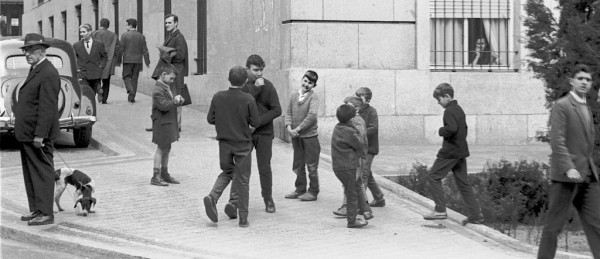Smith-Soto’s street photography – the human condition, one frame at a time
|
With one quick motion of his finger on the camera shutter release, David Smith-Soto erases the boundaries of time and eternalizes an intimate instant as two lovers stare into each other’s eyes. “It’s a glimpse of intimacy,” said David Flores, photographer and special collections archivist at the University of Texas at El Paso. “This is life one frame at a time.”
The black and white photograph taken in Oaxaca, Mexico, in 2000 entitled “Lovers” is one of 26 prints in David Smith-Soto’s street photography exhibit in the Glass Gallery at the University of Texas at El Paso,
Photo Gallery: The Street Photography of David Smith-Soto
Smith-Soto said he was pleased to show some of his 60 years of photography to a large audience, but that the purpose of the show was to raise funds for journalism student internships. “We need to send out more students into the world, so that means we need more funding for that,” said Zita Arocha director of Borderzine, UTEP’s online bilingual magazine. Arocha said it costs approximately $3000 to send one student on an internship.
